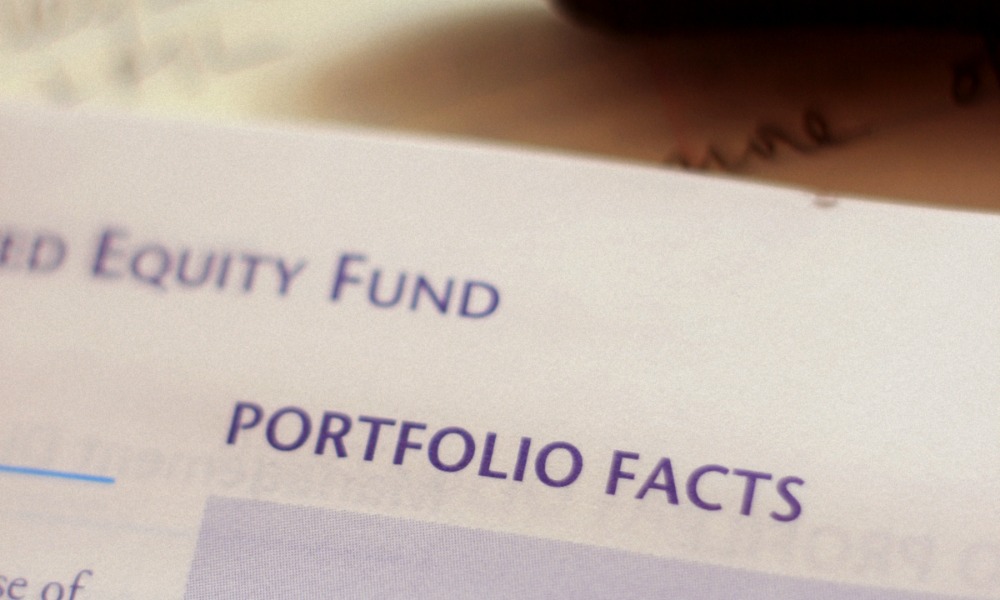Is the CIBC mutual fund worth investing in? See what this product from one of the Big Five has to offer

As with most other Canadian banks, the Canadian Imperial Bank of Commerce (TSX and NYSE: CM) offers mutual funds. While these are a relatively stable and viable investment, mutual funds offered by CIBC can provide varying outcomes. The underlying stocks, bonds, and other assets that comprise their portfolio can have greater or lesser risk and thus greater or lesser returns.
This article focuses on CIBC mutual funds, so let’s have a look at its pros, cons and other factors that may influence investors to make them part of their portfolio.
A short history of the Canadian Imperial Bank of Commerce
The Canadian Imperial Bank of Commerce or CIBC is the “youngest” large bank in Canada. It was formally established in 1961, after the merger of the Canadian Bank of Commerce and the Imperial Bank of Canada, founded in 1867 and 1875 respectively.
The Canadian Bank of Commerce was founded by William McMaster to challenge the Bank of Montreal. A few years later, the Imperial Bank of Canada was founded by Henry Stark Rowland, the former Vice President of Canadian Bank of Commerce.
Both banks would grow into their respective niches in the many decades to come, although the Canadian Bank of Commerce would make more notable achievements between them.
In 1895, Bank of Commerce would grow to 58 branches through several strategic acquisitions, while Imperial Bank would expand only to 18. Only a year later, the Yukon gold strike would prompt the Dominion Government to request Bank of Commerce to set up a branch in Dawson City.
The 1920s would see the Bank of Commerce expand into one of the strongest banks with one of the largest networks. By then, it had over 700 branches locally and new business beyond Canada’s borders – with branches in Barbados, Cuba, Jamaica, and Trinidad also established.
The Bank of Commerce would make another notable milestone in 1936 by becoming the first Canadian bank to put up a personal loans department. Less than 30 years later, Imperial Bank’s chairman Stuart Mackersy presented Commerce president Neil McKinnon with the proposal of merging the two banks. This came as the national economy was booming, due to Canada’s capitalizing on the now-industrialized way of harnessing its natural resources.
So, on June 1st 1961, the merger was completed with the creation of the Canadian Imperial Bank of Commerce, now with more than 1,200 branches in the country. This consolidation would be considered as the largest merger of two chartered banks in Canadian history.
At present, CIBC is now the smallest of the Big Five banks of Canada, with $943.6 billion in assets.
CIBC’s notable achievements
Apart from its storied past and now being listed as one of the Big Five banks of Canada, CIBC has a few more distinctions:
- It’s the first and only Canadian bank to have a “floating branch” on a passenger ship, the MV Jean Brilliant. This branch sailed along the north shore of Quebec’s St. Lawrence River, and served as many as 5000 clients in its heyday
- In 1967, apart from computerizing customer data, CIBC was the first bank to offer a 24-hour cash dispenser, many years before the introduction of ATMs
- In 1992, CIBC first introduced automated telephone banking
- In 1995, CIBC introduced its website and online banking services
- In 2010, CIBC was the first to offer mobile banking services via an iPhone app
How do CIBC Mutual Funds work?
CIBC mutual funds operate much like other mutual funds. CIBC fund advisors take pooled funds from investors, then use the money to build a diverse portfolio consisting of stocks, bonds, and other investable assets. They are traded on the stock exchange, making the value of the fund subject to fluctuations. Some CIBC mutual funds can be composed of hedged funds, derivatives, futures, and other similar high-risk investments.
The CIBC mutual fund can earn interest, dividends, and capital gains.
Investors can choose to have CIBC mutual funds that are managed in two ways:
1. Actively Managed – usually a portfolio manager actively oversees the composition of the fund. They decide which shares, stocks or bonds to buy or sell as part of the effort to achieve their financial goals.
2. Passively Managed – the portfolio manager simply tracks an existing stock market index. The main reason for mimicking another well-balanced and good-performing stock index is to replicate the returns of that portfolio in their own mutual fund. A passively managed fund can be picked out easily if it has the word “index” in its name.
The main difference between active and passive funds is their investment doctrines.
Actively managed funds take a more hands-on approach, buying and selling the underlying stocks in a fund to achieve investment goals.
On the other hand, passively managed funds follow another fund, and the underlying stocks are bought in the same proportion of the fund it follows.
Regardless of how they are managed, CIBC mutual funds have corresponding charges, commissions, and fees which can take a bite out of their earnings. However, index funds are usually less costly.
A word of caution
Investors must bear in mind that mutual fund accounts are not covered by the Canadian Deposit Insurance Corporation; this is one of the biggest risks of investing. So, if a fund fails, there’s a real possibility of losing all that money.
Remember, funds that offer high potential returns are the riskiest investments. The wise investor always does their homework and checks the mutual funds fund fact book before investing in the fund.
What’s good about CIBC mutual funds?
Investing in CIBC mutual funds offers a lot of advantages. The bank has an extensive array of mutual funds, including:
- Money market funds
- Global funds
- Growth funds
- Balanced funds
- Actively managed funds
- Income funds
- Index funds
- Other funds (sector-specific)
CIBC has a wide range of mutual funds and portfolios to meet the needs of investors with different risk appetites and financial goals. They also offer the flexibility of investing in US dollar-denominated funds, which can be convenient for investors who have or need to do business abroad.
Speaking more about flexibility, CIBC mutual funds can be held in their own account. Their savings and earnings can also be forwarded to an investor’s registered accounts like their Registered Retirement Savings Plan (RRSP), Registered Retirement Income Fund (RRIF), or Tax-Free Savings Account (TFSA).
Popular CIBC Mutual Funds
CIBC mutual funds have varying risk levels and associated fees. As with any mutual fund, the higher the risk, the more variable the unit price and the greater and higher the potential loss or profit.
If you’re set on investing in CIBC mutual funds, ask as many questions as you need from one of their advisors then find a portfolio that meets your standards.
You can see below a small sample of a few CIBC mutual funds that are popular with investors. While they may be popular among investors, they are not necessarily the best CIBC mutual funds.
This data was compiled as of October 19, 2023. Values will have changed by the time this article is published, so check the fund pages for more up-to-date information.
|
Fund Symbol |
Fund Name |
3-Year Return |
5-Year Return |
MER |
Assets Under Management |
|
CIB480 |
CIBC Money Market Fund |
1.79% |
1.50% |
0.36% |
$2 billion |
|
CIB479 |
CIBC Canadian Equity Fund |
8.20% |
5.01% |
2.15% |
$529.8 million |
|
CIB491 |
CIBC Emerging Markets Fund |
-2.97% |
-0.59% |
2.80% |
$609.2 million |
|
CIB496 |
CIBC Global Technology Fund |
2.44% |
11.22% |
2.21% |
$290.1 million |
1. CIBC Money Market Fund (CIB480)
Minimum initial investment: $500 | Subsequent investments: $25
This is a low-risk fund mainly invested in short-term government securities. The aim of this money market fund is to offer liquidity while preserving capital.
2. CIBC Canadian Equity Fund (CIB479)
Minimum initial investment: $500 | Subsequent investments: $25
The CIBC Canadian Equity Fund is considered a medium-risk fund, investing primarily in Canadian top-tier equity securities. This includes companies like Shopify, Toronto-Dominion Bank, Barrick Gold, and CN Rail.
3. CIBC Emerging Markets Fund (CIB491)
Minimum initial investment: $500 | Subsequent investments: $25
Emerging market funds tend to be more volatile than most other funds, which is why the CIBC Emerging Markets Fund has a volatility ranking of high-risk. This fund invests in companies based in China, India, other South Asian countries, and Brazil and Russia as well.
4. CIBC Global Technology Fund (CIB496)
Minimum initial investment: $500 | Subsequent investments: $25
CIBC Global Technology Fund is considered medium- to high-risk. This fund invests in some of the world’s biggest tech companies. Stocks in these companies include those of Apple, Microsoft, Amazon, and Tencent.
How do you invest in CIBC mutual funds?
Investing in CIBC mutual funds can be a lengthy process, but this is both necessary and worthwhile. Here are the recommended steps for investing in them:
Step 1. Find an advisor
Mutual funds can only be purchased from a licensed mutual fund advisor.
Even CIBC mutual funds must be sold through a mutual fund advisor who is licensed to trade in mutual funds. Their licence applies only in their immediate location.
Not all the employees in a bank branch are licensed to sell mutual funds. You will have to set an appointment to speak with a licensed advisor.
In most cases, licensed employees who work for the bank can only trade in the bank’s mutual funds.
You can check if an advisor is licensed via the Canadian Securities Administrators (CSA) online platform.
Step 2: Outline your investment profile and goals
Once you’ve engaged the services of a mutual fund advisor, they will have a thorough discussion with you about your investment concerns, goals, and risk preference. With a clear picture of your financial needs, they can then recommend CIBC mutual funds that can best suit your investment style.
They may recommend individual funds, or an investment portfolio to meet your investment objectives. Do not hesitate to ask any questions you may have at any point of this step; don’t forget that it's your money at risk here!
Step 3: Start investing
Now that your financial goals, needs, and risk preferences have been fleshed out, you can begin putting money into your preferred mutual fund. This can be a lump-sum contribution or automatic monthly deposits from your bank account to your investment account.
Most funds vary in their minimum investment amount, so check the fund facts or ask your advisor.
You can track your CIBC mutual funds' performance online and receive account statements every quarter, every six months, or every year. Another option is using their online platform:
If you wish to actively manage your CIBC fund, you have the option of opening a self-directed investment account where you can choose your own investments.
You can then decide on the purchases or sales of the mutual funds, which are then handled by CIBC Asset Management Inc.
As for passively managing your funds, you can go for CIBC’s index funds.
Step 4: Remember your goals and stick to them
Investing in mutual funds can sometimes feel like a real roller-coaster. There will be trading days of nerve-wracking upswings or downswings, and it can make you consider stuffing the money in your mattress instead.
In the short- or medium-term, accept the volatility and keep your long-term goals in mind. However, if you decide to change your fund direction or take money out, consult your advisor.
In most cases, you can withdraw your money from a mutual fund at any time, but it may take 2-3 days to process (unless it’s a money market fund which works like a cash account).
Investing in CIBC mutual funds can seem like a good strategy, but that can be subjective. Potential investors in these mutual funds must first take their financial goals, budget, and risk tolerance into account. If these gel with what CIBC has to offer, then this is a viable investment.
After seeing what CIBC mutual funds have to offer, will you consider investing? Let us know in the comments!



